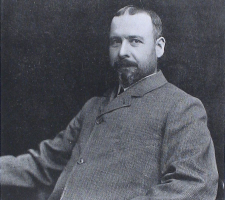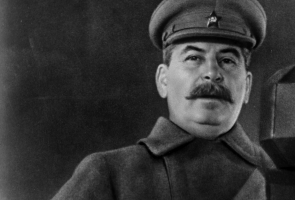Top 7 Interesting Facts about Rhea
Greek mythology's creation myth narrates the universe's beginning. Hesiod's Theogony claims that in the beginning there were only voids. These gaps gave way to ... read more...the creation of Gaia (the Earth), as well as a few other fundamental divine entities including Eros, the Abyss, and the Erebus. After that, Gaia gave birth to Uranus (the Sky) alone. The twelve Titans were created when Uranus impregnated her. Six men and six women made up the group. One of the six female Titanesses was the goddess, Rhea. Later, she and her brother-husband Cronus rose to power as the Titans' queen. How did she marry her brother and how did she become queen? The most interesting facts about Rhea will help us learn more about her life.
-
Rhea gave birth to six children after her union with Cronus. She has three daughters and three sons. Poseidon, Hades, Demeter, Hestia, Hera, and Zeus were among the group; they later evolved into the Twelve Olympians.
By birth, Hestia was the oldest of her siblings, while Zeus was the youngest. She was the goddess of the domestic sphere, the hearth, the family, the state, and virginity. She was first given whatever was prepared or offered as a sacrifice in the home or a public setting. The god of the sea, the ocean, storms, earthquakes, and horses was Poseidon. He would defend mariners as well as numerous cities and colonies in Greece. However, when he was furious, he swung his trident at the ground, causing earthquakes, drownings, and shipwrecks. The ruler of the Underworld and the God of the wealthy and dead was Hades. In his dominion, it was his responsibility to accept the departed souls of both mortals and immortals.
The Greek goddess of agriculture, harvest, fertility, and sacred law was known as Demeter. She would give people grains for bread and preserve the Earth's fertility for agriculture. Along with Zeus, Hera served as the monarch of the gods. She was also the goddess of families, marriage, women, and childbirth. Despite being the patron of married women, she occasionally abused her position. Zeus was the youngest but also the most powerful of all. He was the ruler of the gods and the creator of thunder, lightning, the law, and the justice system. He possessed the ability to rule the cosmos and all gods.
Children of Rhea who descended from Titans were the original Olympian Gods. She was so referred to as the mother of the gods, which is one of the most interesting facts about Rhea.

Rhea - Photo: https://mythologysource.com/ Source: https://www.youtube.com/ -
Uranus, Cronus's father, foresaw that his offspring would depose Cronus. Cronus began swallowing all of his children one by one out of fear of this prophecy. All five of his firstborn children were devoured by him. Mother Rhea was worried about being childless if she couldn't save her final child. Zeus was the last-born and youngest child.
The Goddess sought advice from her mother, Gaia, to protect him from Cronus. Gaia showed her a secret. She gave Cronus a stone wrapped in fabric that resembled a newborn when he requested for the last-born child. Cronus relaxed about the prophecy since he believed he had ingested all of his children. But Zeus was covertly brought to Crete by the goddess Rhea.
She needed assistance from her companions, the swashbuckling Kouretes and Dactyls, to get to Crete. They served as the baby Zeus' protector. She gave Amalthea and other nymphs the responsibility of looking after him in Crete. After leaving her kid behind in Crete, she went back to Cronus. Zeus was raised in Mount Ida's Dictean Cave.
She enlisted the aid of Metis and fooled Cronus into consuming a poisoned beverage at Zeus' return to Rhea. He drank, which caused him to expel everything in his stomach. One by one, every child he had swollen started to emerge. The final kid to emerge from Cronus' womb was Hestia. Zeus and his siblings intended to depose Cronus and give the new regime the name Titanomachy.

Photo: https://en.wikipedia.org/ 
The fight Titanomachy against Cronus - Photo: https://www.youtube.com/ -
One of the most interesting facts about Rhea is she was the Goddess of female fertility, motherhood, and generation. Rhea, a titan goddess, demonstrated her procreative ability by giving birth to six of the most powerful gods and goddesses. She was revered by the Greeks as the goddess of maternity, birthing children, and providing for them.
Her body is connected to the flow of time, menstrual blood, birth waters, milk, and ease and flow, as her name implies. Menstrual blood and birth water flowed, symbolizing fertility.
And the passage of time or generation is referred to as the "flow of time." Rhea, Cronus's wife and mother of the Olympians lived through Titan and Olympian ages. She was hence referred to as the Greek Goddess of generation.
She was also revered as the Goddess of ease and comfort. "The gods who live at their Rhea (ease)," was the phrase used to sanctify her name.

Photo: https://www.greekmythology.com/ 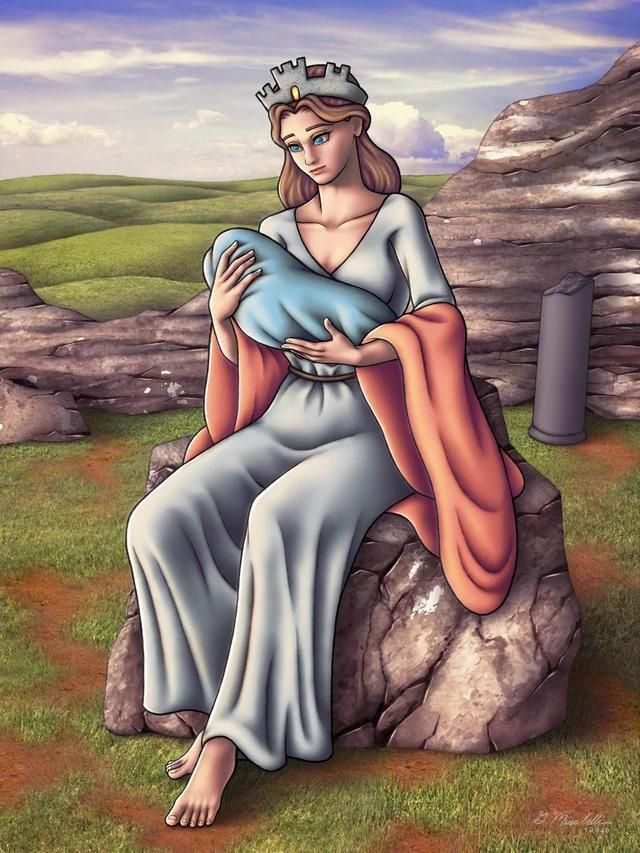
Photo: https://www.reddit.com/ -
Rhea was enraged when Cronus devoured all of her offspring except for Zeus, according to Ovid's Fasti. Even while her youngest child was still alive, she was unable to appreciate being a mother. Even the lions were nursed to satisfy her need for maternity, and the lions later evolved into her spiritual companions. She frequently sobbed because her kids were not home.
Zeus didn't appear to her until he was an adult. They all participated in the Titanomachy battle after being birthed from Cronus' jaws. The war didn't conclude for ten years. When Rhea eventually got to meet her kids, they were all adults with jobs that Zeus had given them. Rhea was thus prevented from having a motherly role.
When she raised the young Dionysus in the tale, her yearning to be a mother was also evident. Zeus had sent Hermes to bring Dionysus to her to appease Hera's wrath. Additionally, according to ancient texts, she was present when Apollo was born. She cleaned Apollo with pure water alongside her sisters Tethys and Theia. They dressed him in a white gown as well. They took care of him while Leto was recovering.

Photo: https://hero.fandom.com/ 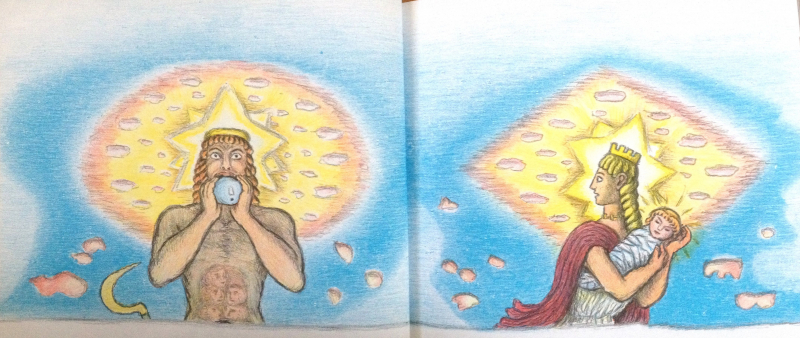
Photo: https://www.pinterest.com/ -
The Gigantomachy was a conflict between the Olympian gods and the Giants or Gigantes, sons of Uranus and Gaia. They all desired to topple the existing order and usurp it to usurp themselves as the new universe's rulers.
When the giant Alcyoneus stole the god Helios' livestock, the conflict began. According to a prophecy, gods could only defeat giants with the help of a mortal. Gaia searched for the plant that would protect the giants. Zeus, however, seized every plant for himself, not sparing a single one.
Alcyoneus, who didn't perish in his own country, was fought by Heracles during the conflict. Heracles killed the giant by dragging him out of his territory on the counsel of Athena. Dionysus similarly killed Eurytus as how Hermes killed Hippolytus. When Python and his brother Enceladus were put in prison, the conflict came to an end.
Rhea took part in the conflict and assisted the Olympians in overcoming the giants. However, it is unknown how she carried out her duties during the conflict.

Photo: https://www.flickr.com/ 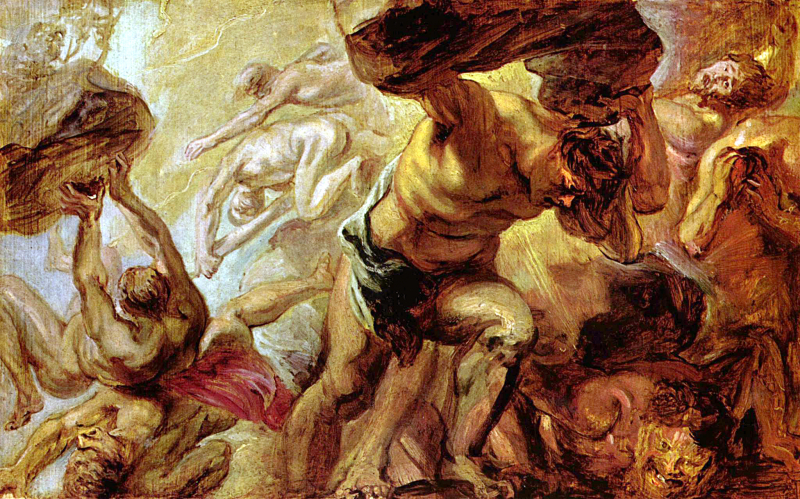
Photo: https://burglaralarmbritain.wordpress.com/ -
The Greeks revered Goddess Rhea and erected several temples and cults in her honor. She had hidden young Zeus from Cronus in Phaistos, where the first temple was constructed. She still has a name for the temple, which is shaped like a cave. People who lived close to that temple gave her heartfelt worship and respect. To celebrate her, they would frequently dance jubilantly to loud drum beats.
Similar temples could be seen close to Megalopolis in Arkadia and Anagyros in Attika. She was revered as "Meter Theon," the mother of the gods, there. The most well-known and popular temple, nevertheless, is Lakedaimon at Peloponessos. One of the first shrines to Goddess Rhea is this temple, which the inhabitants of Akriai built in her honor.

Photo: https://encrypted-tbn0.gstatic.com/ 
Photo: https://en.wikipedia.org/ -
Rhea and Cybele, the Phrygian Great Mother, are often compared. Both goddesses are typically shown as matronly women who are draped in a Polos or a Mural turret crown.
Each of them is depicted as a goddess on a lion and a chariot pulled by two lions. Additionally, they are occasionally shown seated on a throne with lions on either side. Rhea is accompanied by these two lions because they are her sacred creatures. She also has the chariot, tambourine, crown, and cornucopia as additional heavenly characteristics.
Her well-known representation of riding on a celestial chariot in the fourth century BC was drawn by two lions. In Greece, people put her logo on city gates. The greatest representation of her logo was two stone lions defending the gates of Mycenae. Greek sculptures also showed Rhea clutching a stone that was covered in a cloth that had been delivered to Cronus.

Photo: https://www.pinterest.com/ 
Photo: https://commons.wikimedia.org/
























